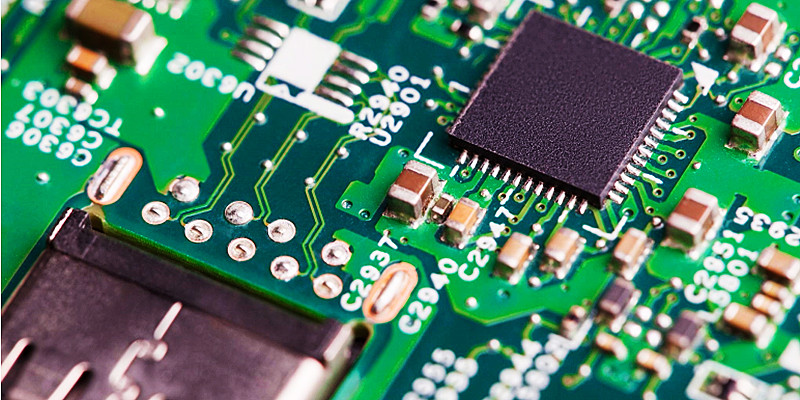
In the ever-evolving world of electronics, the demand for faster, smaller, and more complex printed circuit boards (PCBs) is relentless. To meet these demands and stay competitive, the PCB assembly industry is turning to automation and robotics. This shift is transforming the way PCBs are manufactured, leading to increased efficiency, precision, and consistency. In this article, we will delve into the future of PCB assembly and explore why automation and robotics are playing a pivotal role in shaping the industry.

Before we dive into the role of automation and robotics, let’s understand the changing landscape of PCB assembly. PCBs are at the heart of nearly all electronic devices, from smartphones and laptops to industrial machinery and medical equipment. As consumer expectations for smaller, faster, and more powerful devices continue to rise, so too does the complexity of PCBs.
Traditional PCB assembly processes often rely heavily on manual labor, which comes with its own set of challenges:
a. Human Error: Manual assembly can lead to errors, such as misplacements, soldering defects, and component damage, which can be costly to rectify.
b. Labor Intensity: As PCBs become more complex, the number of components and connections increases, making manual assembly time-consuming and labor-intensive.
c. Consistency Issues: Achieving consistent quality across large production runs can be challenging with manual labor, leading to variations in product performance.
To address these challenges, the PCB assembly industry has been steadily embracing automation. Automated processes involve the use of machines, conveyors, and computer-controlled systems to handle tasks such as component placement, soldering, and quality control. Here’s why automation is becoming increasingly prevalent:
a. Precision and Accuracy: Automated machines can place components with pinpoint precision, reducing the risk of errors and improving overall product quality.
b. Speed and Efficiency: Automation speeds up the assembly process, allowing for higher production rates and shorter time-to-market.
c. Consistency: Automated systems can consistently produce PCBs with identical quality, reducing variability in the final product.
d. Cost Savings: While the initial investment in automation can be significant, the long-term cost savings from reduced labor and error rates can be substantial.
In addition to automation, robotics is playing a crucial role in the future of PCB assembly. Robotics adds another layer of flexibility and precision to the manufacturing process. Here’s how:
a. Component Handling: Robots equipped with advanced vision systems can handle and place delicate components with unmatched accuracy.
b. Quality Control: Robots can perform real-time quality control checks, identifying defects and anomalies in the assembly process.
c. Flexibility: Robotic systems can be reprogrammed and reconfigured quickly to accommodate changes in PCB design or production volume.
d. Worker Safety: By handling repetitive and potentially hazardous tasks, robots improve worker safety and reduce the risk of injuries.
Another exciting development in PCB assembly is the integration of advanced machine learning and artificial intelligence (AI) into automation and robotics. AI-powered systems can:
a. Predict and Prevent Defects: Machine learning algorithms can analyze historical data to predict potential defects and take corrective actions in real time.
b. Self-Optimize: AI-driven systems can optimize the assembly process by fine-tuning parameters for maximum efficiency and quality.
c. Enhance Quality Control: AI can be used to detect even the slightest defects, ensuring that only flawless PCBs leave the production line.
d. Predictive Maintenance: AI can predict when machines and robots require maintenance, reducing downtime and improving overall productivity.
While automation and robotics are revolutionizing PCB assembly, they do not replace the need for human expertise entirely. Instead, they complement human skills. Skilled technicians and engineers are essential for programming, maintenance, and troubleshooting of automated systems. This human-machine collaboration is essential for achieving the highest levels of efficiency and quality in PCB assembly.
Automation and robotics are not only about efficiency and precision but also about sustainability. These technologies can help reduce waste, energy consumption, and environmental impact in the PCB assembly process. For example, AI-powered optimization can minimize material waste, while automated quality control can reduce the need for rework, conserving resources.
The future of PCB assembly is undeniably intertwined with automation and robotics. These technologies are redefining the industry by enhancing precision, increasing efficiency, improving quality, and reducing environmental impact. As PCBs continue to evolve to meet the demands of modern electronics, automation and robotics will remain at the forefront, ensuring that the industry can keep pace with the relentless march of innovation. Embracing these technologies is not just a choice but a necessity for those who seek to thrive in the dynamic world of PCB assembly.